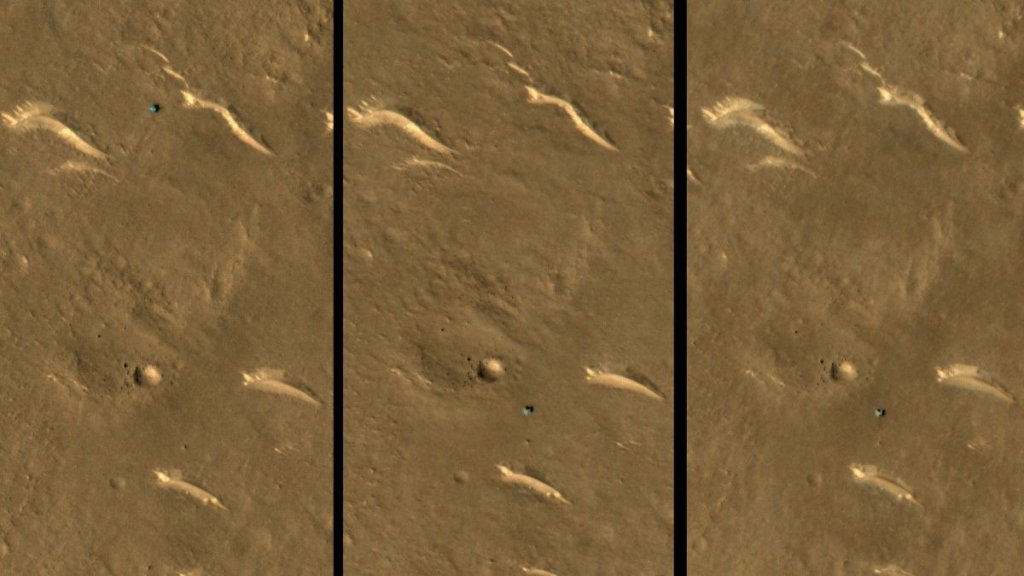On Feb. 10, China’s Tianwen 1 mission — the country’s first interplanetary mission — celebrated its second anniversary in Mars orbit. But one major piece of the mission, the Zhurong rover, seems to have stalled, and there’s now photo evidence of its stationary state.
Zhurong entered a planned hibernation in May 2022 to ride out the dark and cold Martian winter, as the rover relies on solar energy for power and heat. Its controllers at the China National Space Administration (CNSA) anticipated a wake-up in December as the light returned in Martian spring, but the agency has not yet provided any updates about Zhurong.
New images (opens in new tab) released Tuesday (Feb. 21) by the University of Arizona, which manages the HiRISE camera on NASA’s Mars Reconnaissance Orbiter, show that Zhurong did not move between Sept. 7, 2022, and Feb. 8, 2023, further suggesting that the rover has not yet awoken from hibernation.
Related: China silent on fate of Zhurong Mars rover on 2nd anniversary of Tianwen 1 mission
In January, the South China Morning Post reported that the rover had not yet re-established communications with mission control. There are many reasons that the rover might remain in hibernation. Dust might have accumulated on Zhurong’s solar panels, reducing their efficiency. And data from NASA’s Perseverance rover, a nuclear-powered spacecraft that can operate through winter, suggests that Mars is still quite cold — potentially below Zhurong’s operating levels.
Tianwen 1 mission deputy chief designer Jia Yang told reporters in September 2022 that in order for Zhurong to wake up from hibernation, the rover must reach a temperature of 5 degrees Fahrenheit (minus 15 degrees Celsius) and generate at least 140 watts of energy.
Both scenarios can be remedied by conditions on Mars — a dust devil or wind storm could clear the solar panels, as happened with NASA’s Spirit rover in 2005, and the planet could warm up as the year progresses.
And if Zhurong is in for a permanent sleep, all is not lost: The rover has successfully completed its original mission, which was intended to last just three months on the Martian surface. In total, Zhurong successfully completed a year of operations, which is no small feat. In September 2022, the rover’s mission was presented with the International Astronautical Federation’s annual space achievement award.
Follow Stefanie Waldek on Twitter @StefanieWaldek (opens in new tab). Follow us on Twitter @Spacedotcom (opens in new tab) and on Facebook (opens in new tab).

